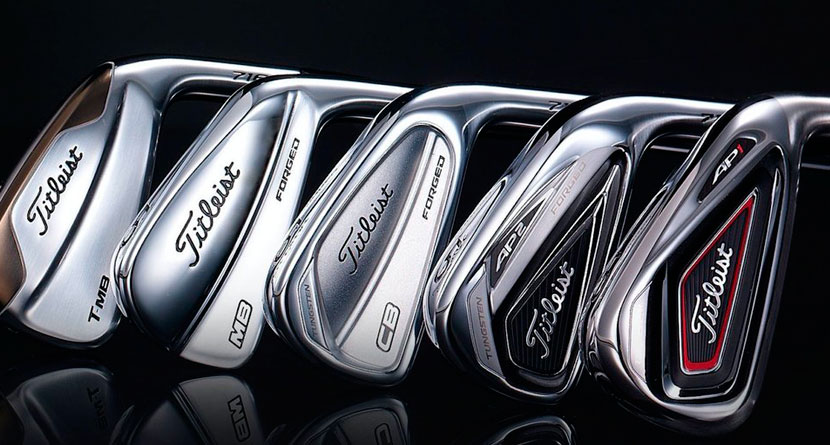Golf is a game of searching. Whether it’s a new swing thought or the latest piece of equipment, part of the sport’s allure is that perfection is always out of reach. While most amateur’s problems lie within their swing or course strategy, an often-heard complaint comes at the expense of the player’s equipment.
We all want the latest and greatest equipment, but any number of things can impede people from buying new equipment. However, when the time comes to upgrade the equipment in your bag, what should you be looking for?
Be honest – is it time to let go and pick up a new set of irons? https://t.co/IyJic6nDuS
— Golfweek (@golfweek) May 2, 2017
Golfweek.com’s David Dusek talked to Club Champion founder and master clubbuilder Nick Sherburne about the tell-tale signs of when you should buy new irons.
As grooves in irons slowly wear over time, different shortcomings arise. Theoretically, a shot hit with an iron that has worn grooves will have less spin. On some shots that produces a knuckleball that swerves off line. Other shots hit with the same club might launch higher, then fall short of the distance expected.
“Chances are there is a combination of things happening as your irons age,” Sherburne said. “Obviously the grooves are not worn out everywhere, and amateurs hit it all over the face, so you’re getting a plethora of golf shot inconsistencies.”
Here are three things to do if you are not getting the performance from your irons that you expect.
1. Inspect the grooves. This one is simple: Keep your clubs clean. Too many players attempt shots with dirty clubs. Grass and debris gets stuck in the grooves. Remove it with a tee or brush to expose as much of the groove edges as possible. Use a damp towel to keep clubs clean.
2. Get the lofts checked. “This is what I tell people all the time, and it is one of the most important things to do as a spring tune-up,” Sherburne said. He recommends recreational players have their iron lofts checked at least once a year, because playing and practicing (especially on mats) can slowly bend irons. It is not unusual for pros to have their lofts checked monthly. With use, iron lofts tend to increase, so shots fly higher and lose distance. But these changes can happen unevenly through a set. If you have two irons that seem to fly the same distance, chances are good their lofts are too close. A good custom-fitter can return each iron to its original loft.
3. Talk with a PGA of America professional or a clubfitter about the lie angle of your irons. When a fitter checks iron lofts, he or she normally checks the lie angle, too. If you have been taking lessons or if your swing has changed since you purchased your irons, the lie angle of your irons may not match for your new move. Ideally, you should get a dynamic fitting that involves hitting off a lie board or using special tape affixed to the sole of an iron. If the impact tape is marked in the toe, a player will tend to miss to the right, so a fitter likely will try to bend the lie angle slightly more upright. If the toe comes up and the tape is marked near the heel at impact, the lie angle likely needs to flatter. Adjusting the lie angle irons is a simple, relatively easy to way to hit straighter shots and regain some performance benefits from clubs.
[Golfweek.com]
— — —
Keep yourself up-to-date with the latest goings-on in the world of golf by following the SwingxSwing Clubhouse on social media. We share stories, stats and breaking news on Twitter, keep the fun going off the course on Instagram and share any and all golf-related topics on Facebook.




